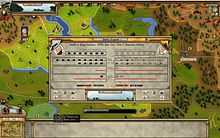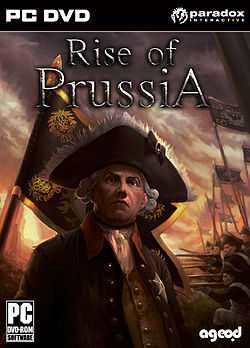Rise of Prussia is a grand strategy wargame developed by AGEOD and published by Paradox Interactive. It was announced on April 24, 2009[2] and was released on March 9, 2010.[1]
Rise of Prussia is a follow-up to their historical strategy games Birth of America, American Civil War, Napoleon's Campaigns, and Wars in America. Rise of Prussia covers the European campaigns of the Seven Years’ War (1756–1763).
Gameplay

A preview image of Rise of Prussia showing the map, interfaces, and battle report.
Rise of Prussia features 200 new leaders with individual portraits and 300 units. Players have the option to select from two sides. There are Prussia and their allies led by Frederick II and opposing them are Austria and their allies. Each leader has his own individual abilities that will provide bonuses to his units. For example, Frederick II has movement bonuses makes his troops move significantly faster than other generals. There are 20 scenarios the player can choose from. 12 of these are battle scenarios centered on key battles, 7 span each year of the war, and the final Grand Campaign scenario spans the entire conflict. The map covers all of Germany and surrounding vicinity, with over 1,000 different regions.[1][3]
External links
References
| System requirements |
|
Requirements
|
| PC |
| Operating system |
Windows XP/Vista/ Windows 7 (Does not support 98 or 2000) |
| CPU |
Pentium IV 1800+ MHz |
| Memory |
1024 Mb RAM Hard |
| Hard drive space |
2Gb of free space |
| Graphics hardware |
128 Mb DirectX 9.0c compatible card |
| Sound hardware |
DirectX 9.0c compatible sound card |
| Network |
Internet Connection for multiplayer (Play-by-Email only) |
|
|
|---|
| | Adaptive Game Engine titles | |
|---|
| | Other titles | |
|---|
|

